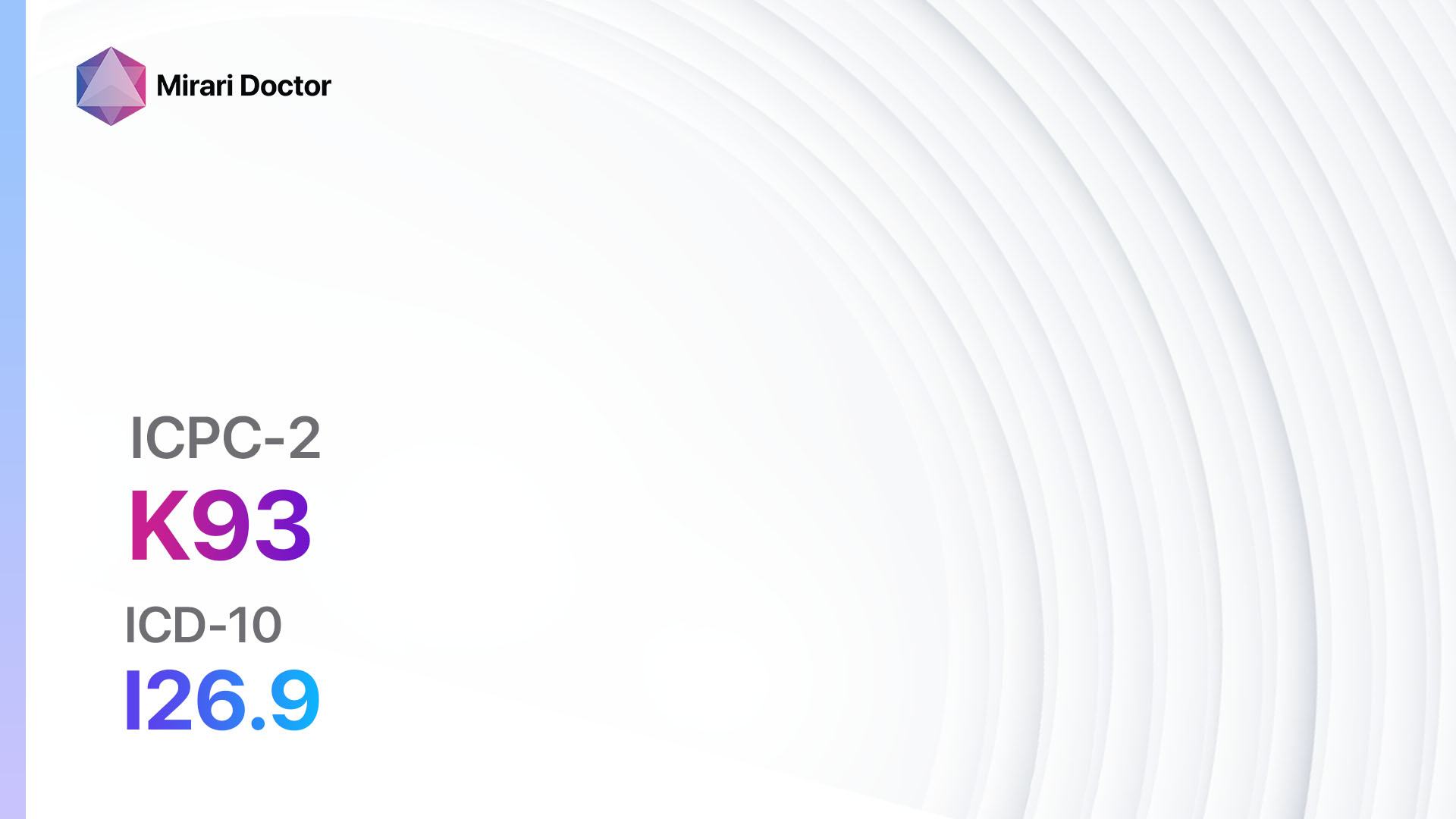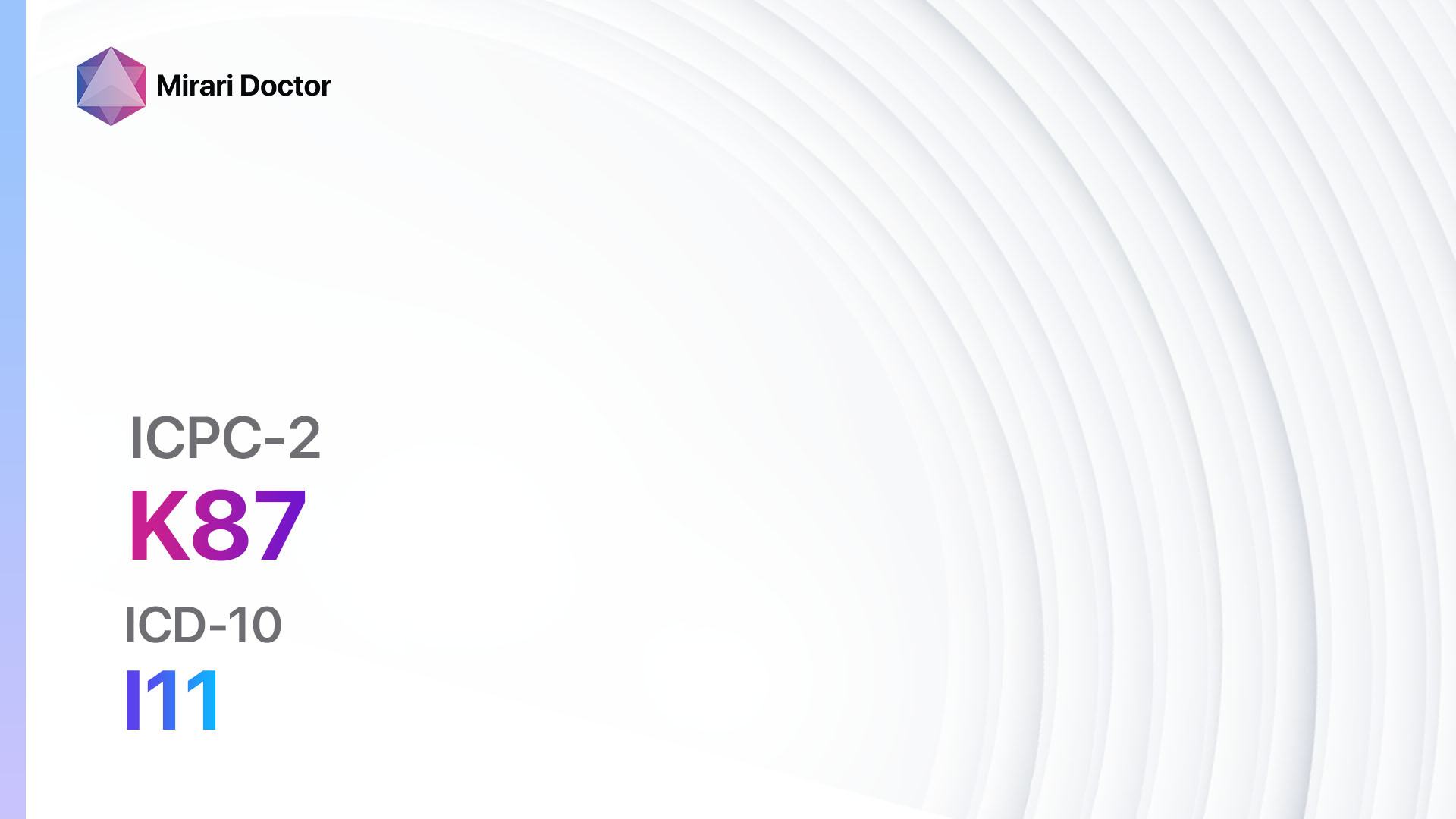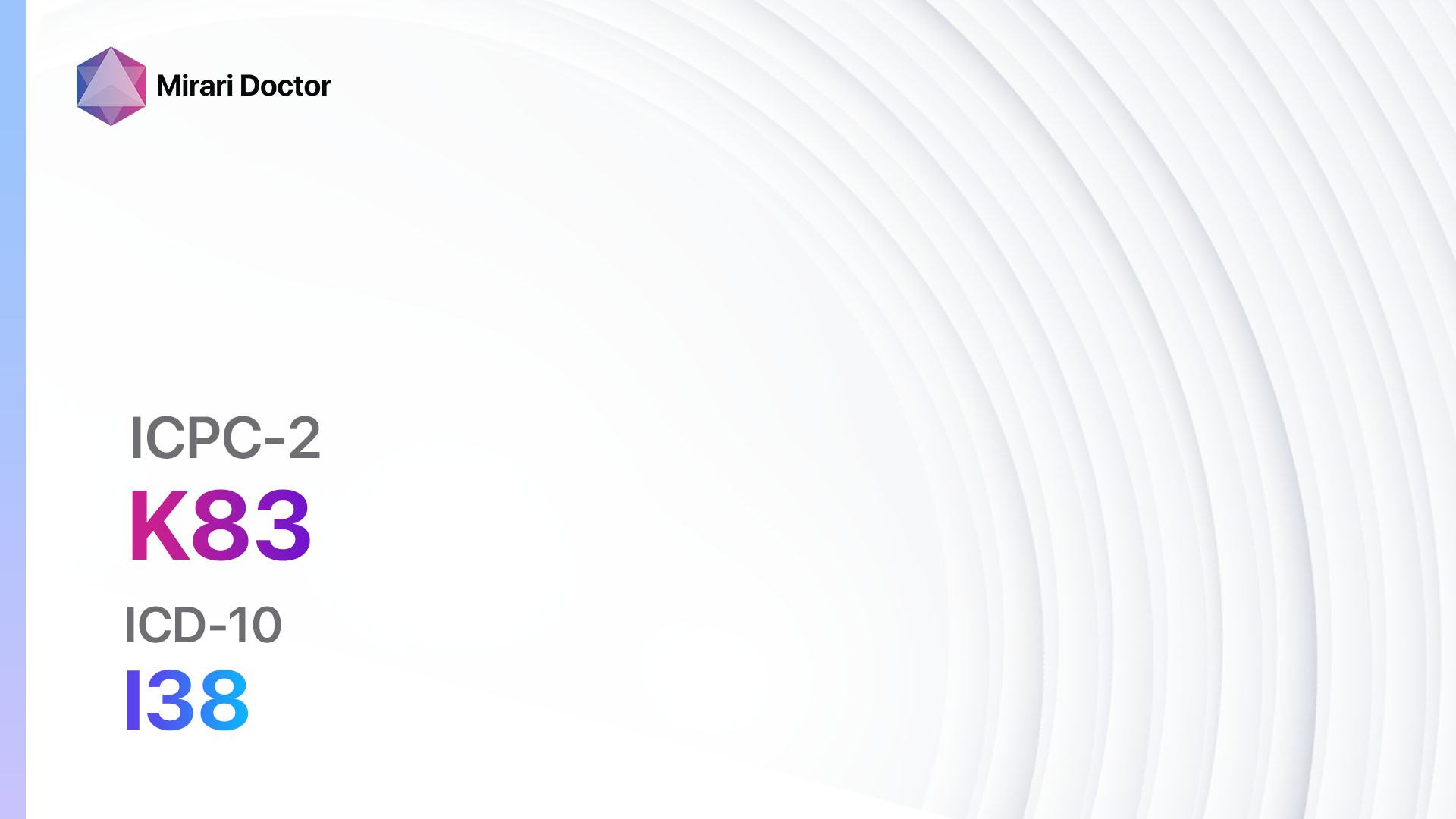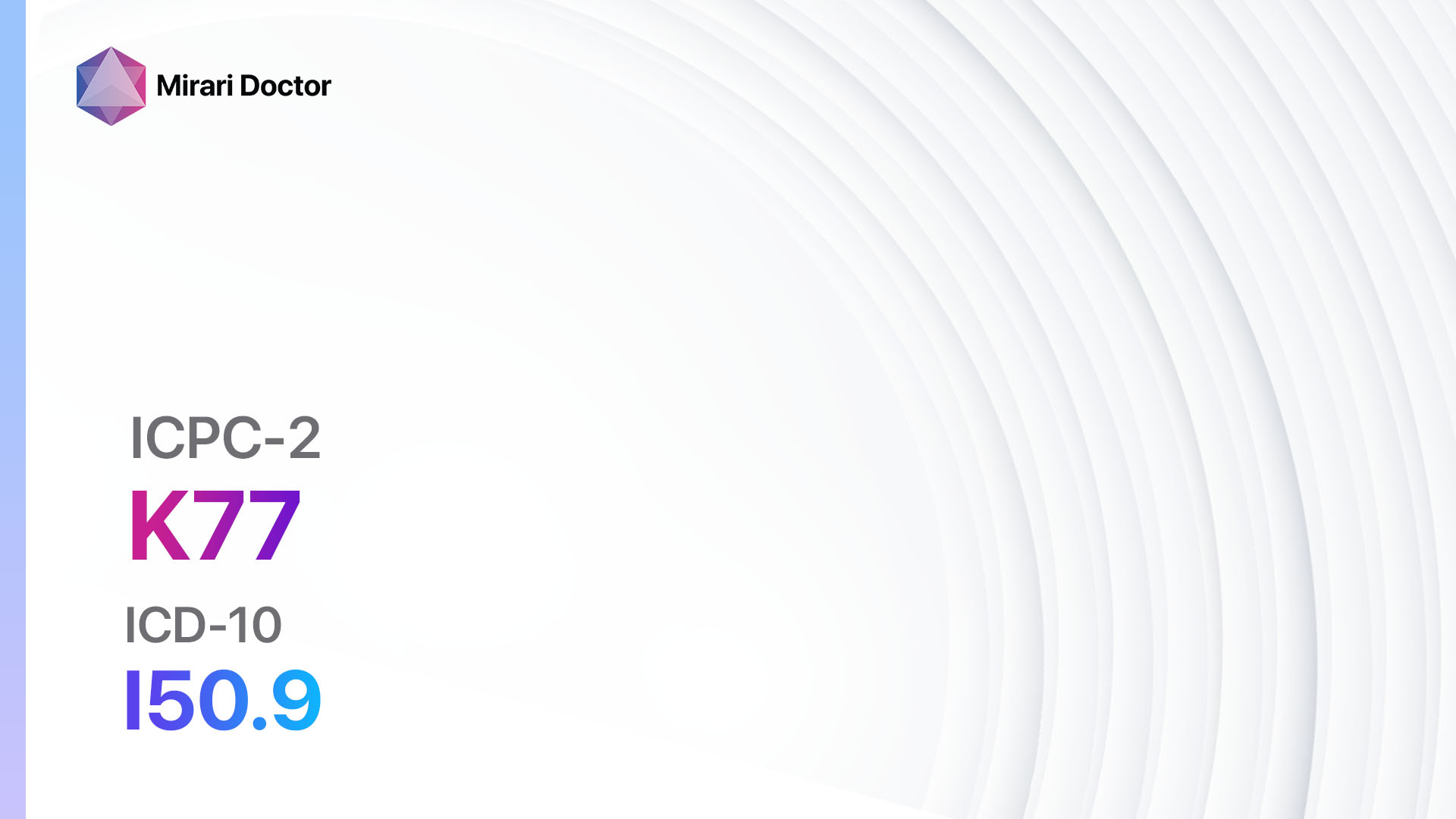
Introduction
Palpitations, or awareness of the heart beating, can be a concerning symptom for patients. It is important to evaluate and diagnose the underlying cause of palpitations to ensure appropriate management and treatment.[1] This guide aims to provide a comprehensive approach to diagnosing and managing palpitations.
Codes
Symptoms
- Palpitations: Patients may describe a sensation of their heart beating rapidly, irregularly, or forcefully.[4]
- Awareness of heart: Patients may be more aware of their heart beating, even during normal activities.[5]
Causes
- Anxiety or stress: Emotional factors can lead to palpitations.[6]
- Physical exertion: Strenuous exercise or physical activity can cause palpitations.[7]
- Medications: Certain medications, such as stimulants or decongestants, can cause palpitations.[8]
- Caffeine or nicotine: Consumption of caffeine or nicotine can trigger palpitations.[9]
- Medical conditions: Underlying medical conditions, such as thyroid disorders or heart disease, cause palpitations.[10]
Diagnostic Steps
Medical History
- Gather information about the patient’s symptoms, including the frequency, duration, and triggers of palpitations.
- Assess the patient’s medical history, including any known heart conditions, thyroid disorders, or other relevant medical conditions.
- Inquire about the patient’s medication use, including over-the-counter medications and supplements.
- Evaluate the patient’s lifestyle factors, such as caffeine or nicotine consumption, stress levels, and physical activity.
Physical Examination
- Perform a thorough physical examination, including measurement of blood pressure, heart rate, and rhythm.
- Auscultate the heart to assess for any abnormal heart sounds or murmurs.
- Palpate the peripheral pulses to evaluate for any irregularities or discrepancies.
- Assess for signs of thyroid dysfunction, such as an enlarged thyroid gland or tremors.
Laboratory Tests
- Complete blood count (CBC): To assess for anemia or other blood disorders.
- Thyroid function tests: To evaluate thyroid hormone levels.
- Electrolyte panel: To assess for any electrolyte imbalances.
- Cardiac enzymes: To rule out myocardial infarction or other cardiac conditions.
- Urinalysis: To evaluate for any underlying kidney or urinary tract abnormalities.
Diagnostic Imaging
- Electrocardiogram (ECG): To assess the electrical activity of the heart and identify any arrhythmias.
- Holter monitor: A portable ECG device worn by the patient for 24-48 hours to monitor heart rhythm continuously.
- Echocardiogram: An ultrasound of the heart to evaluate its structure and function.
- Stress test: To assess the heart’s response to physical exertion and identify any exercise-induced arrhythmias.
- Cardiac MRI or CT scan: To obtain detailed images of the heart and identify any structural abnormalities.
Other Tests
- Electrophysiology study: Invasive procedure to evaluate the electrical activity of the heart and identify the source of arrhythmias.
- Tilt table test: To assess for vasovagal syncope or other autonomic dysfunctions.
- Event monitor: A portable device worn by the patient for several weeks to record heart rhythm during symptomatic episodes.
Follow-up and Patient Education
- Schedule a follow-up appointment to review the diagnostic test results and discuss the diagnosis and treatment plan.
- Provide patient education on lifestyle modifications, such as reducing caffeine or nicotine intake, managing stress, and maintaining a healthy weight.
- Discuss the importance of adherence to prescribed medications and follow-up appointments.
- Encourage the patient to seek medical attention if symptoms worsen or new symptoms develop.
Possible Interventions
Traditional Interventions
Medications:
Top 5 drugs for Palpitations/awareness of heart:
- Beta-blockers (e.g., Metoprolol, Atenolol):
- Cost: Generic versions are typically <$30/month.
- Contraindications: Severe bradycardia, heart block.
- Side effects: Fatigue, dizziness, bradycardia.
- Severe side effects: Bronchospasm, heart failure.
- Drug interactions: Calcium channel blockers, insulin.
- Warning: Should not be abruptly stopped.
- Calcium channel blockers (e.g., Verapamil, Diltiazem):
- Cost: Generic versions can be $10-$50/month.
- Contraindications: Severe hypotension, heart failure.
- Side effects: Constipation, dizziness, headache.
- Severe side effects: Heart block, peripheral edema.
- Drug interactions: Beta-blockers, grapefruit juice.
- Warning: Monitoring of blood pressure and heart rate is required.
- Anti-anxiety medications (e.g., Lorazepam, Alprazolam):
- Cost: Generic versions can be $10-$50/month.
- Contraindications: Severe respiratory depression, narrow-angle glaucoma.
- Side effects: Sedation, dizziness, confusion.
- Severe side effects: Respiratory depression, dependence.
- Drug interactions: Opioids, alcohol.
- Warning: Risk of dependence and withdrawal symptoms.
- Anti-arrhythmic medications (e.g., Amiodarone, Flecainide):
- Cost: Generic versions can be $10-$50/month.
- Contraindications: Severe bradycardia, heart block.
- Side effects: Fatigue, dizziness, visual disturbances.
- Severe side effects: Pulmonary toxicity, liver toxicity.
- Drug interactions: Beta-blockers, grapefruit juice.
- Warning: Regular monitoring of thyroid and liver function is required.
- Antidepressants (e.g., Sertraline, Escitalopram):
- Cost: Generic versions can be $10-$50/month.
- Contraindications: Concurrent use of MAO inhibitors, recent myocardial infarction.
- Side effects: Nausea, headache, sexual dysfunction.
- Severe side effects: Serotonin syndrome, suicidal thoughts.
- Drug interactions: MAO inhibitors, NSAIDs.
- Warning: Risk of worsening depression and suicidal thoughts.
Alternative Drugs:
- Magnesium supplements: May help reduce palpitations in patients with magnesium deficiency. Cost: $5-$20/month.
- Potassium supplements: Can be considered if hypokalemia is identified. Cost: $5-$20/month.
- Anti-anxiety herbs: Certain herbs, such as valerian root or passionflower, may have calming effects. Cost: Varies depending on the specific herb.
- Omega-3 fatty acids: May have cardiovascular benefits and help reduce palpitations. Cost: $10-$30/month.
- Vitamin D supplements: Low levels of vitamin D have been associated with palpitations. Cost: $5-$20/month.
Surgical Procedures:
- Catheter ablation: Invasive procedure to destroy abnormal heart tissue causing arrhythmias. Cost: $20,000 to $50,000.
- Implantable cardioverter-defibrillator (ICD) placement: Device implanted to monitor and treat life-threatening arrhythmias. Cost: $30,000 to $50,000.
- Pacemaker placement: Device implanted to regulate heart rhythm in patients with bradycardia. Cost: $20,000 to $50,000.
Alternative Interventions
- Acupuncture: May help reduce stress and improve overall well-being. Cost: $60-$120 per session.
- Yoga and meditation: Can help manage stress and promote relaxation. Cost: Varies depending on the class or instructor.
- Biofeedback: Teaches patients to control their body’s response to stress and reduce palpitations. Cost: $50-$150 per session.
- Herbal supplements: Certain herbs, such as hawthorn or motherwort, may have calming effects on the heart. Cost: Varies depending on the specific supplement.
- Homeopathy: Some homeopathic remedies, such as Ignatia or Aconitum, may be used to address palpitations. Cost: Varies depending on the specific remedy.
Lifestyle Interventions
- Reduce caffeine intake: Advise patients to limit or avoid caffeine-containing beverages, such as coffee, tea, and energy drinks.
- Quit smoking: Encourage patients to quit smoking to reduce the risk of palpitations and other cardiovascular complications.
- Manage stress: Recommend stress management techniques, such as exercise, relaxation exercises, or counseling.
- Regular exercise: Encourage patients to engage in regular physical activity to improve cardiovascular health and reduce palpitations.
- Healthy diet: Emphasize the importance of a balanced diet rich in fruits, vegetables, whole grains, and lean proteins.
It is important to note that the cost ranges provided are approximate and may vary depending on the location and availability of the interventions.
Mirari Cold Plasma Alternative Intervention
Understanding Mirari Cold Plasma
- Safe and Non-Invasive Treatment: Mirari Cold Plasma is a safe and non-invasive treatment option for various skin conditions. It does not require incisions, minimizing the risk of scarring, bleeding, or tissue damage.
- Efficient Extraction of Foreign Bodies: Mirari Cold Plasma facilitates the removal of foreign bodies from the skin by degrading and dissociating organic matter, allowing easier access and extraction.
- Pain Reduction and Comfort: Mirari Cold Plasma has a local analgesic effect, providing pain relief during the treatment, making it more comfortable for the patient.
- Reduced Risk of Infection: Mirari Cold Plasma has antimicrobial properties, effectively killing bacteria and reducing the risk of infection.
- Accelerated Healing and Minimal Scarring: Mirari Cold Plasma stimulates wound healing and tissue regeneration, reducing healing time and minimizing the formation of scars.
Mirari Cold Plasma Prescription
Video instructions for using Mirari Cold Plasma Device – K04 Palpitations/awareness of heart (ICD-10:R00.2)
| Mild | Moderate | Severe |
| Mode setting: 1 (Infection) Location: 5 (Lungs) Morning: 15 minutes, Evening: 15 minutes |
Mode setting: 1 (Infection) Location: 5 (Lungs) Morning: 30 minutes, Lunch: 30 minutes, Evening: 30 minutes |
Mode setting: 1 (Infection) Location: 5 (Lungs) Morning: 30 minutes, Lunch: 30 minutes, Evening: 30 minutes |
| Mode setting: 2 (Wound Healing) Location: 5 (Lungs) Morning: 15 minutes, Evening: 15 minutes |
Mode setting: 2 (Wound Healing) Location: 5 (Lungs) Morning: 30 minutes, Lunch: 30 minutes, Evening: 30 minutes |
Mode setting: 2 (Wound Healing) Location: 5 (Lungs) Morning: 30 minutes, Lunch: 30 minutes, Evening: 30 minutes |
| Mode setting: 7 (Immunotherapy) Location: 1 (Sacrum) Morning: 15 minutes, Evening: 15 minutes |
Mode setting: 7 (Immunotherapy) Location: 1 (Sacrum) Morning: 30 minutes, Lunch: 30 minutes, Evening: 30 minutes |
Mode setting: 7 (Immunotherapy) Location: 1 (Sacrum) Morning: 30 minutes, Lunch: 30 minutes, Evening: 30 minutes |
| Mode setting: 7 (Immunotherapy) Location: 4 (Heart, Bile & Pancreas) Morning: 15 minutes, Evening: 15 minutes |
Mode setting: 7 (Immunotherapy) Location: 4 (Heart, Bile & Pancreas) Morning: 30 minutes, Lunch: 30 minutes, Evening: 30 minutes |
Mode setting:7 (Immunotherapy) Location: 4 (Heart, Bile & Pancreas) Morning: 30 minutes, Lunch: 30 minutes, Evening: 30 minutes |
| Total Morning: 60 minutes approx. $10 USD, Evening: 60 minutes approx. $10 USD |
Total Morning: 120 minutes approx. $20 USD, Lunch: 120 minutes approx. $20 USD, Evening: 120 minutes approx. $20 USD, |
Total Morning: 120 minutes approx. $20 USD, Lunch: 120 minutes approx. $20 USD, Evening: 120 minutes approx. $20 USD, |
| Usual treatment for 7-60 days approx. $140 USD – $1200 USD | Usual treatment for 6-8 weeks approx. $2,520 USD – $3,360 USD |
Usual treatment for 3-6 months approx. $5,400 USD – $10,800 USD
|
 |
|
Use the Mirari Cold Plasma device to treat Palpitations/awareness of heart effectively.
WARNING: MIRARI COLD PLASMA IS DESIGNED FOR THE HUMAN BODY WITHOUT ANY ARTIFICIAL OR THIRD PARTY PRODUCTS. USE OF OTHER PRODUCTS IN COMBINATION WITH MIRARI COLD PLASMA MAY CAUSE UNPREDICTABLE EFFECTS, HARM OR INJURY. PLEASE CONSULT A MEDICAL PROFESSIONAL BEFORE COMBINING ANY OTHER PRODUCTS WITH USE OF MIRARI.
Step 1: Cleanse the Skin
- Start by cleaning the affected area of the skin with a gentle cleanser or mild soap and water. Gently pat the area dry with a clean towel.
Step 2: Prepare the Mirari Cold Plasma device
- Ensure that the Mirari Cold Plasma device is fully charged or has fresh batteries as per the manufacturer’s instructions. Make sure the device is clean and in good working condition.
- Switch on the Mirari device using the power button or by following the specific instructions provided with the device.
- Some Mirari devices may have adjustable settings for intensity or treatment duration. Follow the manufacturer’s instructions to select the appropriate settings based on your needs and the recommended guidelines.
Step 3: Apply the Device
- Place the Mirari device in direct contact with the affected area of the skin. Gently glide or hold the device over the skin surface, ensuring even coverage of the area experiencing.
- Slowly move the Mirari device in a circular motion or follow a specific pattern as indicated in the user manual. This helps ensure thorough treatment coverage.
Step 4: Monitor and Assess:
- Keep track of your progress and evaluate the effectiveness of the Mirari device in managing your Palpitations/awareness of heart. If you have any concerns or notice any adverse reactions, consult with your health care professional.
Note
This guide is for informational purposes only and should not replace the advice of a medical professional. Always consult with your healthcare provider or a qualified medical professional for personal advice, diagnosis, or treatment. Do not solely rely on the information presented here for decisions about your health. Use of this information is at your own risk. The authors of this guide, nor any associated entities or platforms, are not responsible for any potential adverse effects or outcomes based on the content.
Mirari Cold Plasma System Disclaimer
- Purpose: The Mirari Cold Plasma System is a Class 2 medical device designed for use by trained healthcare professionals. It is registered for use in Thailand and Vietnam. It is not intended for use outside of these locations.
- Informational Use: The content and information provided with the device are for educational and informational purposes only. They are not a substitute for professional medical advice or care.
- Variable Outcomes: While the device is approved for specific uses, individual outcomes can differ. We do not assert or guarantee specific medical outcomes.
- Consultation: Prior to utilizing the device or making decisions based on its content, it is essential to consult with a Certified Mirari Tele-Therapist and your medical healthcare provider regarding specific protocols.
- Liability: By using this device, users are acknowledging and accepting all potential risks. Neither the manufacturer nor the distributor will be held accountable for any adverse reactions, injuries, or damages stemming from its use.
- Geographical Availability: This device has received approval for designated purposes by the Thai and Vietnam FDA. As of now, outside of Thailand and Vietnam, the Mirari Cold Plasma System is not available for purchase or use.
References
- Raviele A, Giada F, Bergfeldt L, et al. Management of patients with palpitations: a position paper from the European Heart Rhythm Association. Europace. 2011;13(7):920-934. doi:10.1093/europace/eur130
- ICPC-2: International Classification of Primary Care. 2nd ed. Oxford: Oxford University Press; 1998.
- ICD-10: International Statistical Classification of Diseases and Related Health Problems. 10th Revision. Geneva: World Health Organization; 2016.
- Weber BE, Kapoor WN. Evaluation and outcomes of patients with palpitations. Am J Med. 1996;100(2):138-148. doi:10.1016/s0002-9343(97)89451-x
- Mayou R, Sprigings D, Birkhead J, Price J. Characteristics of patients presenting to a cardiac clinic with palpitation. QJM. 2003;96(2):115-123. doi:10.1093/qjmed/hcg017
- Barsky AJ, Cleary PD, Sarnie MK, Ruskin JN. Panic disorder, palpitations, and the awareness of cardiac activity. J Nerv Ment Dis. 1994;182(2):63-71. doi:10.1097/00005053-199402000-00001
- Giada F, Silvestri I, Rossillo A, Nicotera PG, Manzillo GF, Raviele A. Psychiatric profile, quality of life and risk of syncopal recurrence in patients with tilt-induced vasovagal syncope. Europace. 2005;7(5):465-471. doi:10.1016/j.eupc.2005.05.008
- Lessmeier TJ, Gamperling D, Johnson-Liddon V, et al. Unrecognized paroxysmal supraventricular tachycardia. Potential for misdiagnosis as panic disorder. Arch Intern Med. 1997;157(5):537-543.
- Newcombe PJ, Robb KA, Lyons J, et al. Alcohol consumption and palpitations: an observational study. BMJ Open. 2018;8(11):e023532. Published 2018 Nov 28. doi:10.1136/bmjopen-2018-023532
- Summerton N, Mann S, Rigby A, Petkar S, Dhawan J. New-onset palpitations in general practice: assessing the discriminant value of items within the clinical history. Fam Pract. 2001;18(4):383-392. doi:10.1093/fampra/18.4.383
Related articles
Made in USA




























